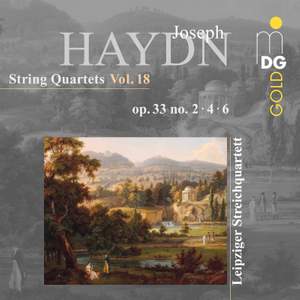Haydn's originality, wit and esprit are once again as impressive as the striking inventiveness and versatility of this highly acclaimed ensemble.
If his opus one marks the birth of the genre, then Opus 33 marks the rebirth, containing some of his most inspired and innovative music. Haydn skilfully plays with the listener's expectations by offering lots of surprising twists and the Leipzig String Quartet reveal and revel in the delights of Haydn's musical wit and invention.
The year is 1781. Haydn is turning 50 and has 75 symphonies, 15 operas and countless baryton trios under his belt. His last batch of string quartets were a decade ago and after a long period of artistic searching and experimentation, he has since left 'Sturm und Drang' behind him. He now applies his new artistic approach and matured style to his original 'invention', the string quartet.
Haydn's compositional technique developed rapidly. The greatest possible effect is achieved with astonishingly economical means - there is often only one theme and the tiniest motif particles are further developed with virtuosity. The other voices become increasingly emancipated fromthe first violin which are particularly beautiful to observe in the slow movements.
Op. 33 No. 2 in E-flat Major is nicknamed "The Joke": On completion of the theme in the final movement, the uninitiated listener thinks it's all over. However, after a rest of almost four bars, the musicians repeat the first two-bar phrase, concluding in pianissimo. This is Haydn at his most clever and witty and one senses the Leipzig String Quartet have great fun in defying the listener's conformist expectations, performing with gusto and depth.



